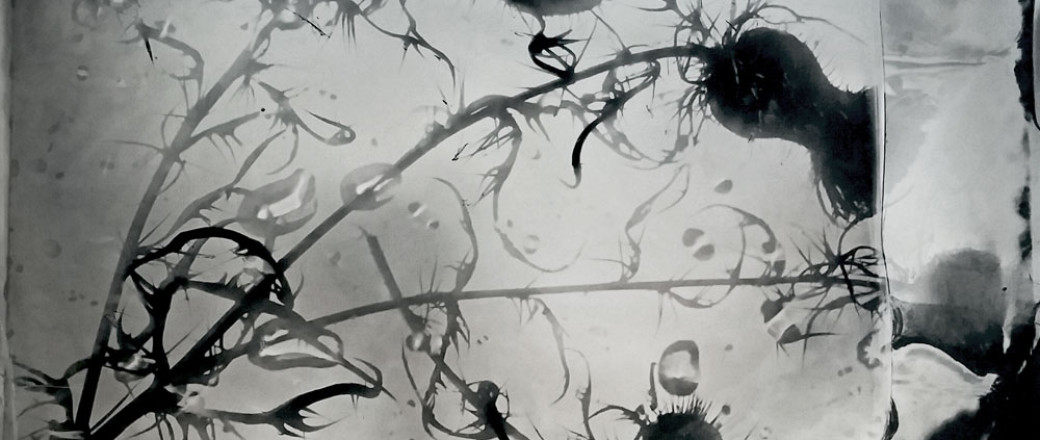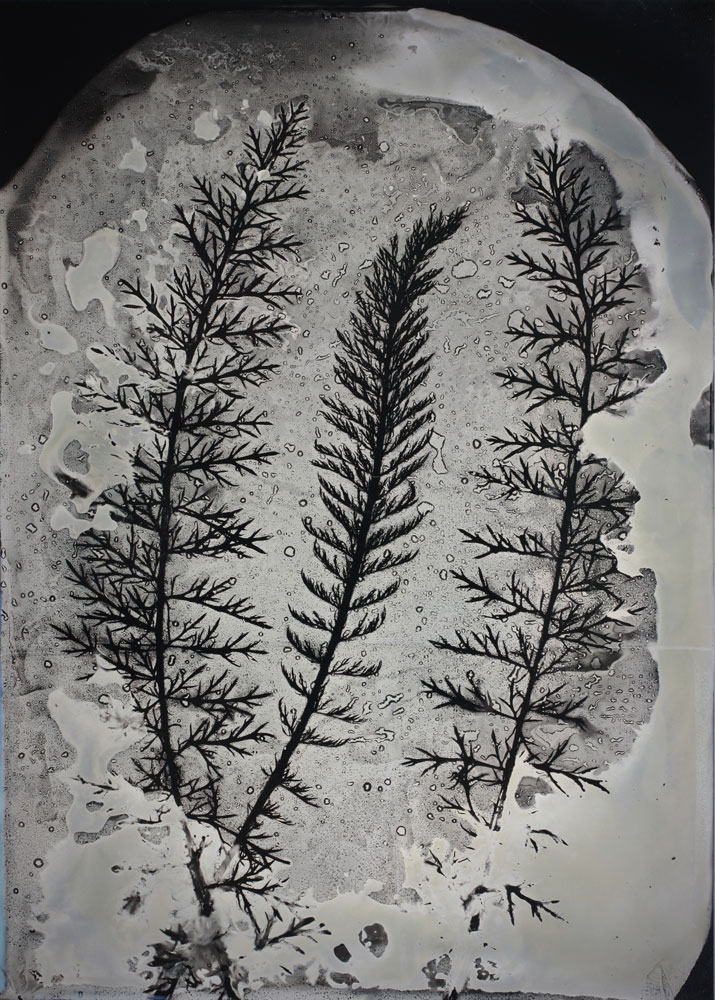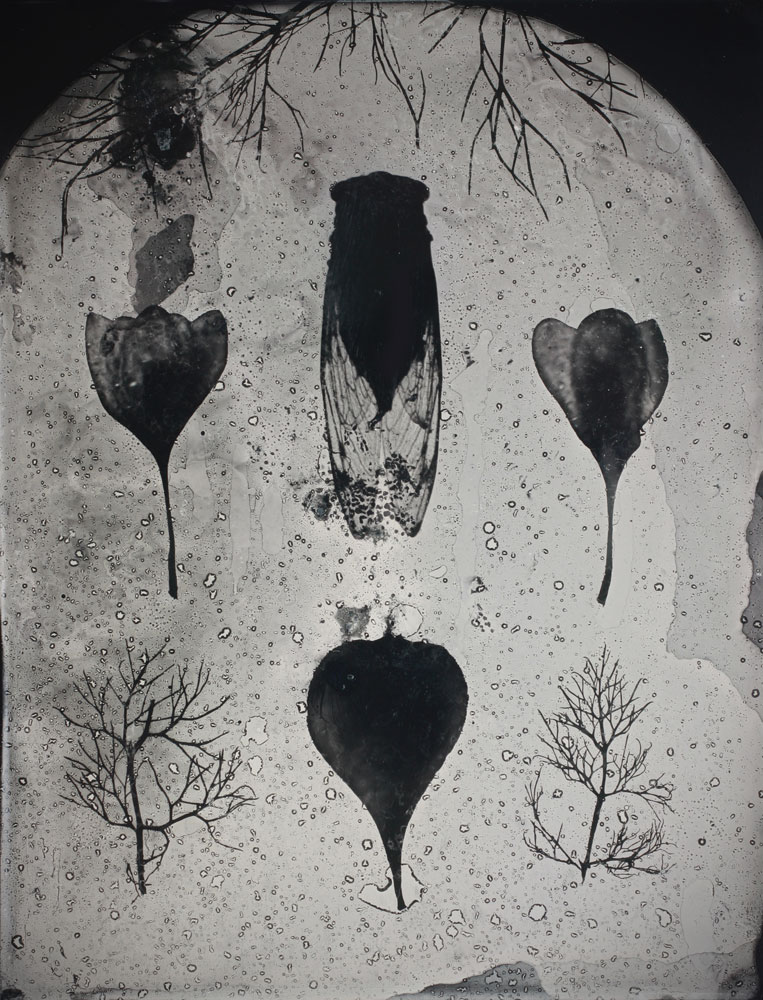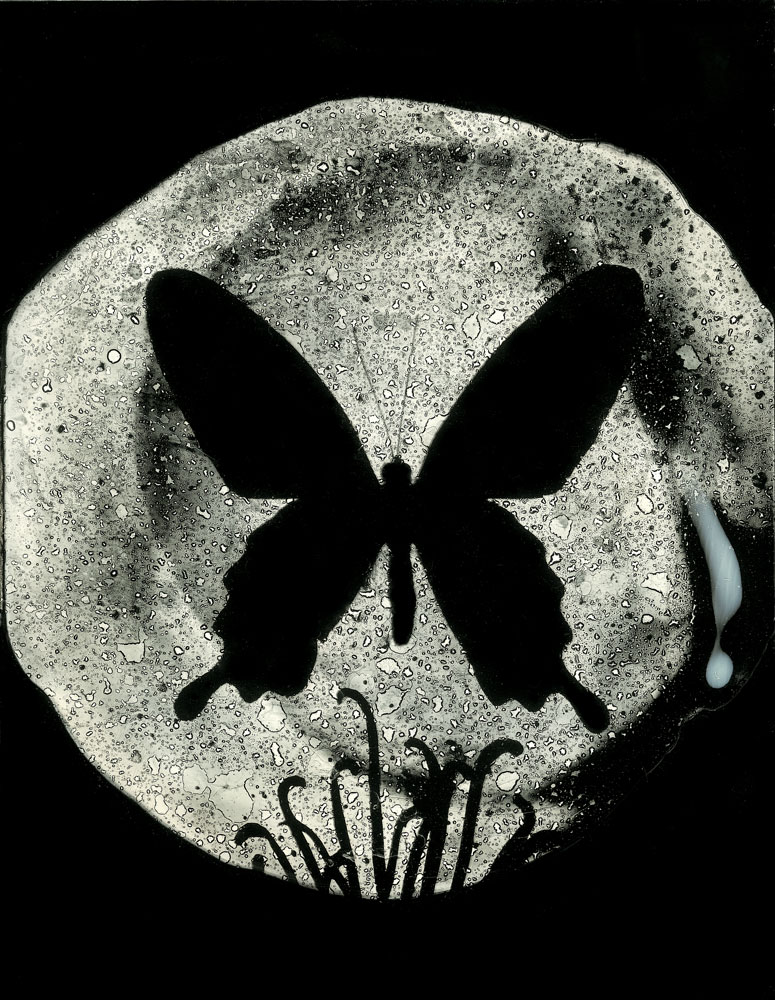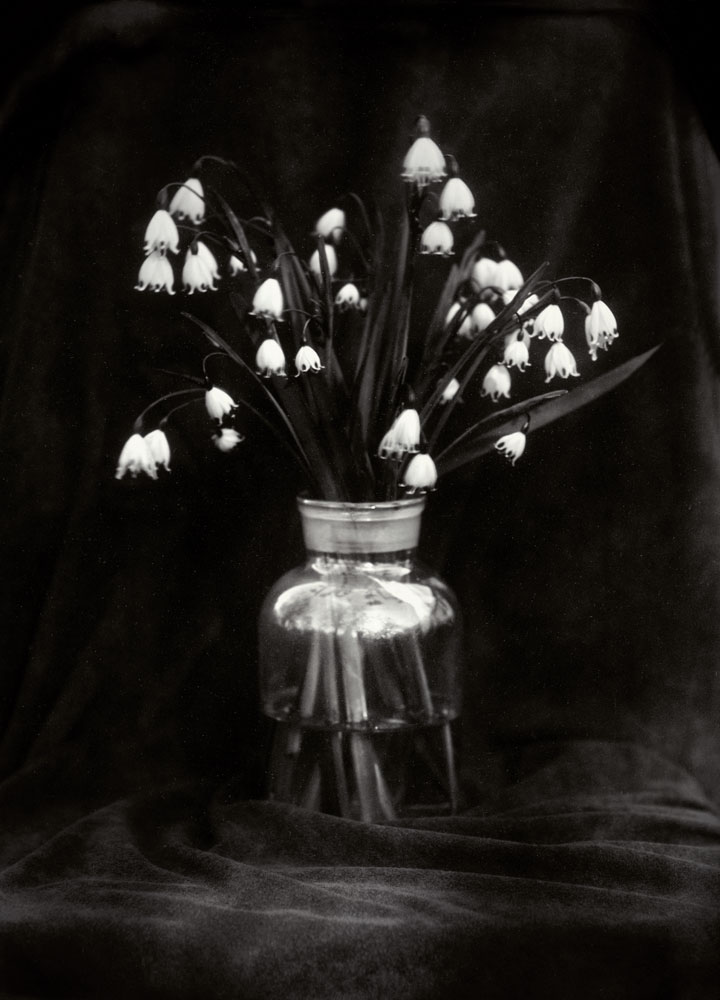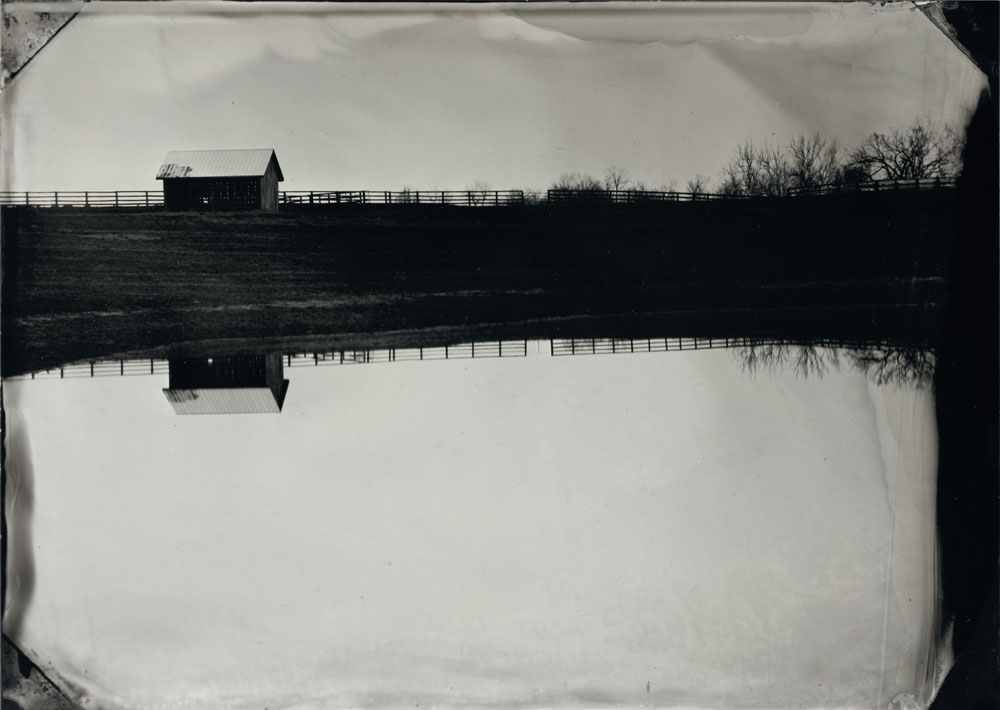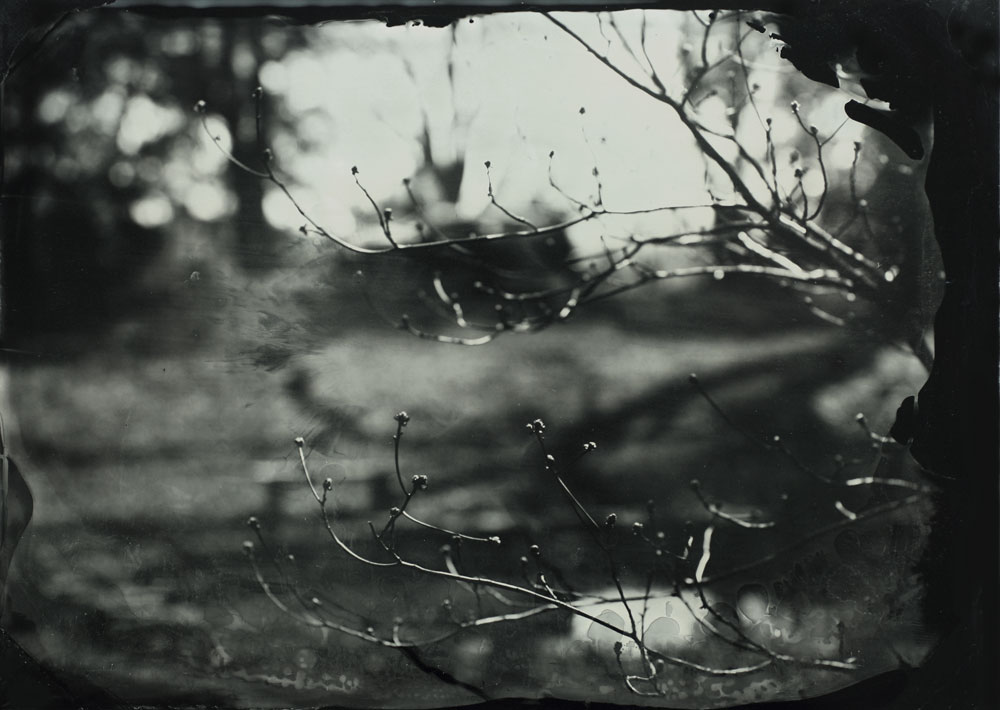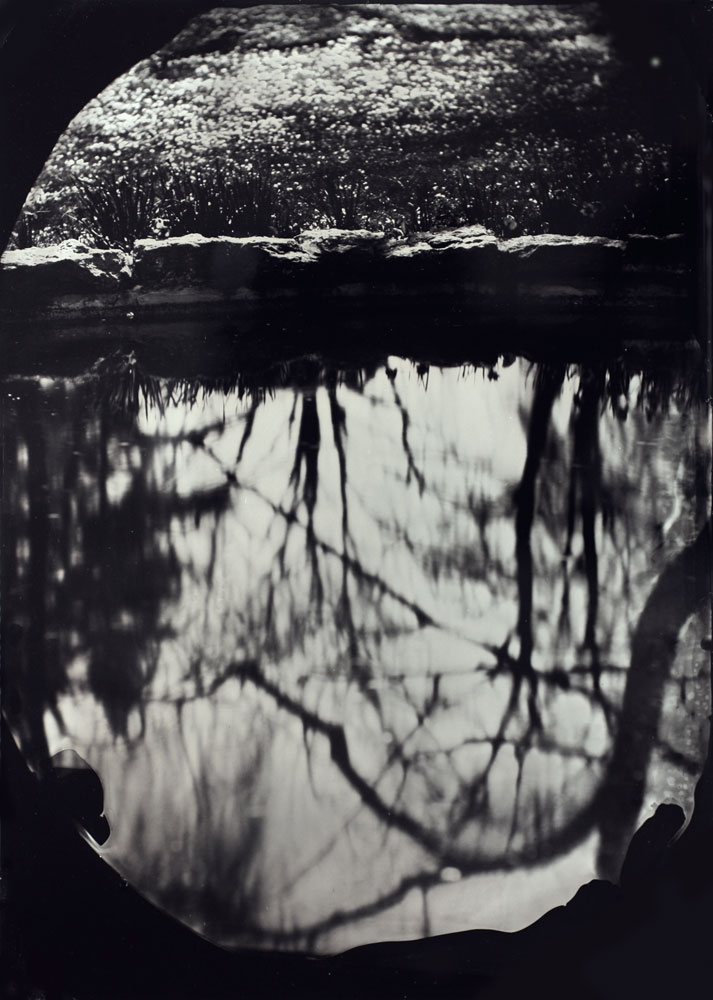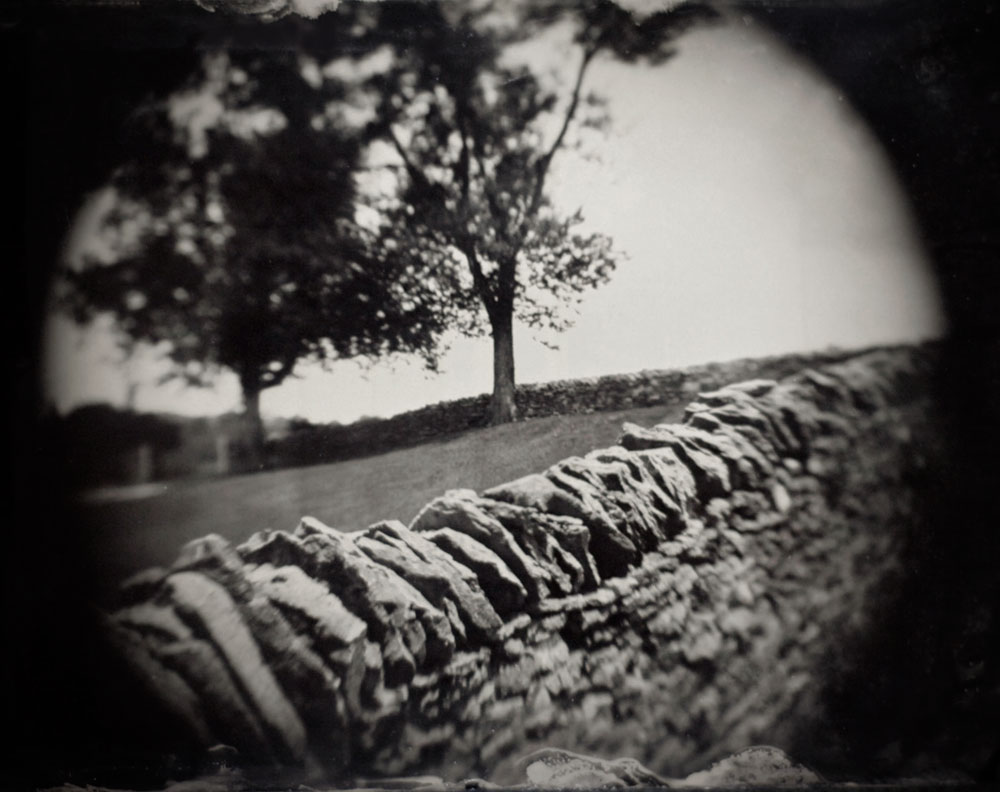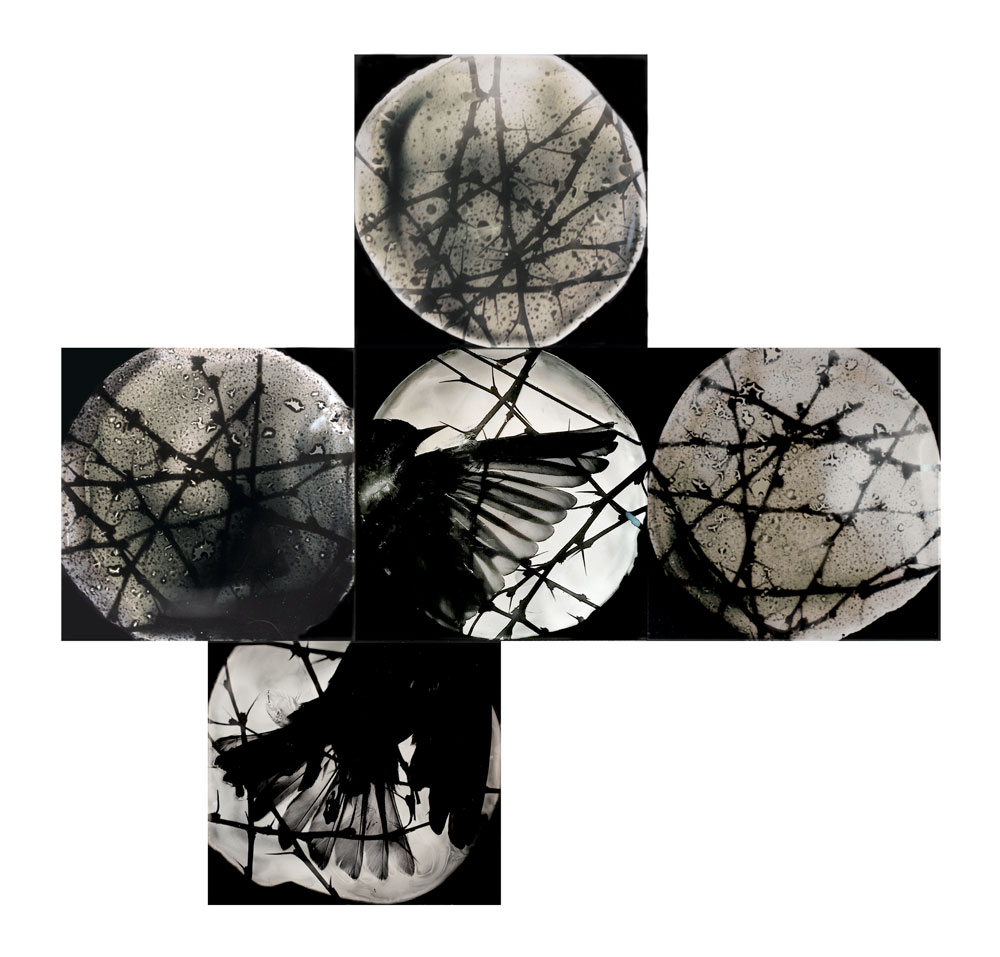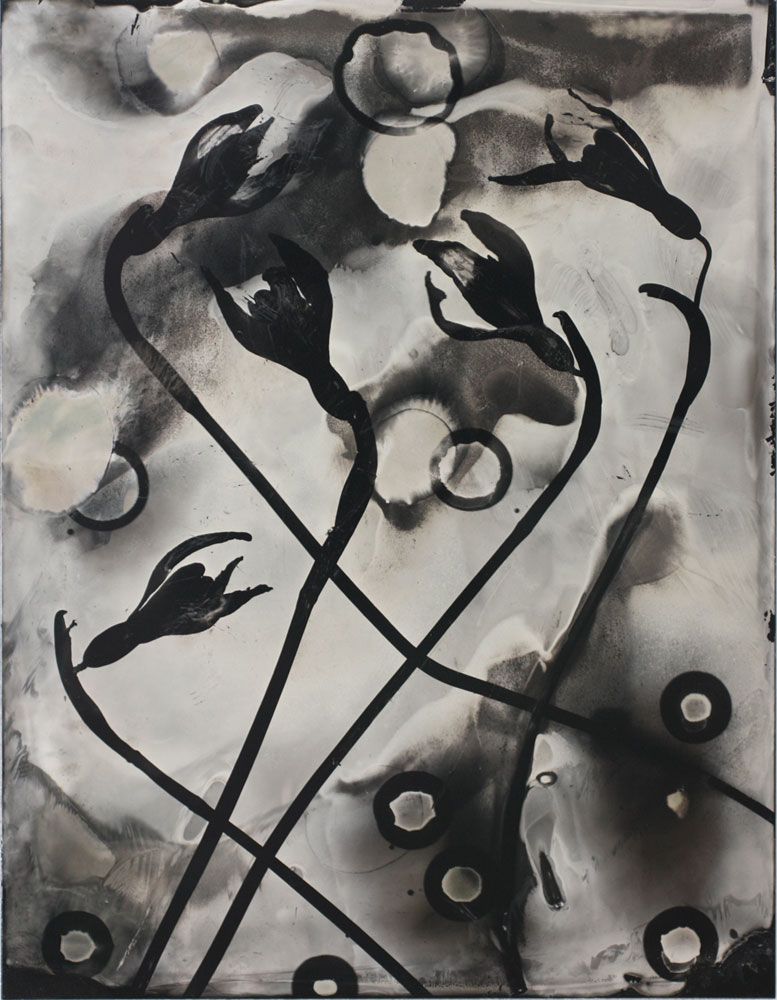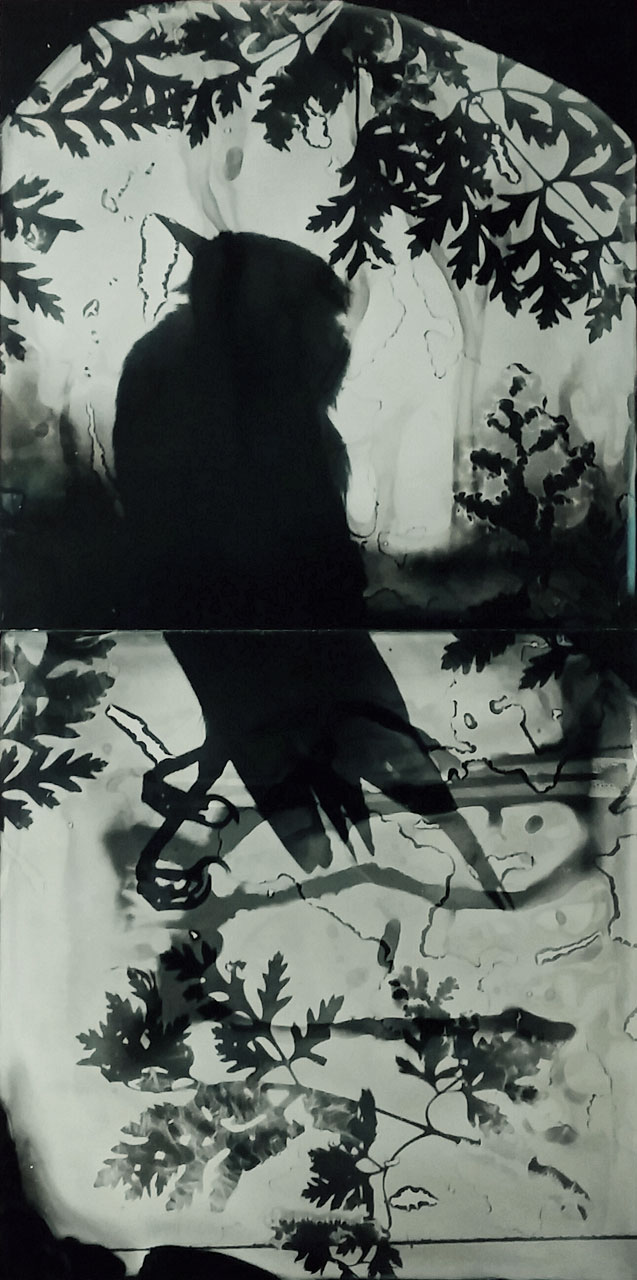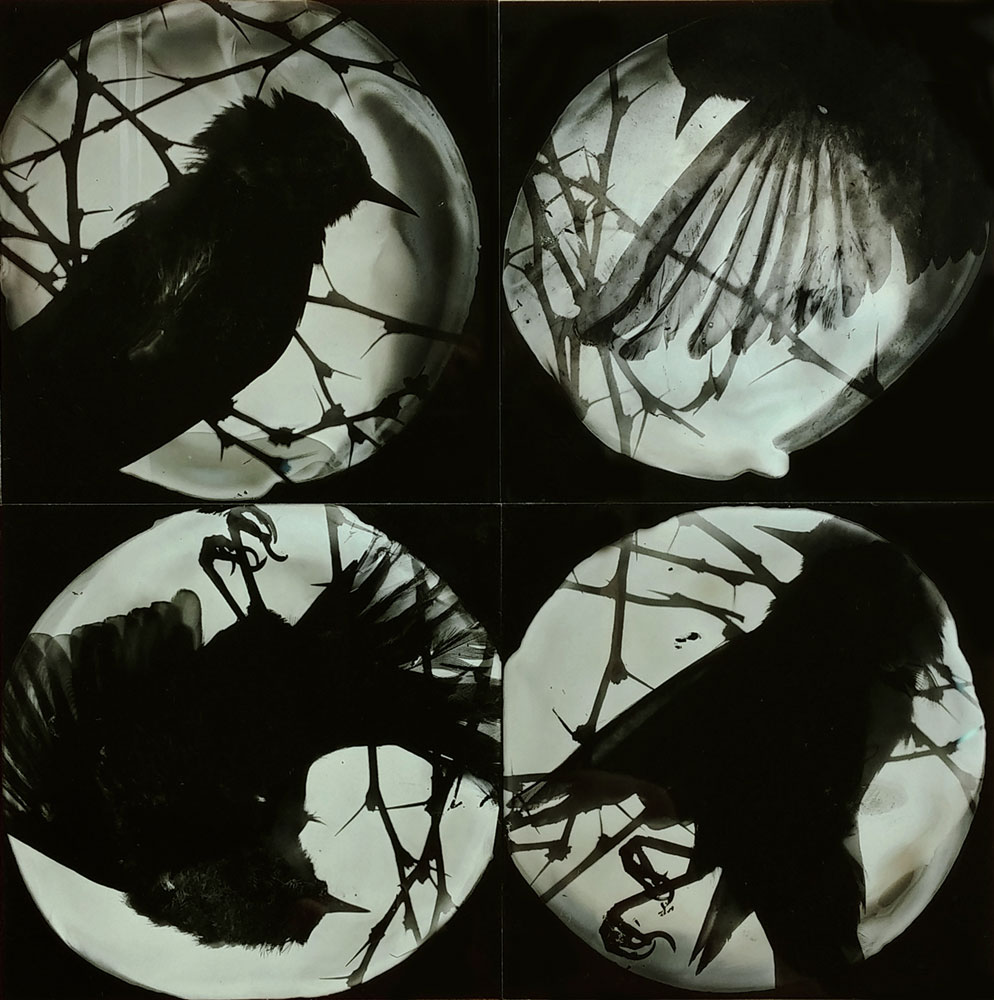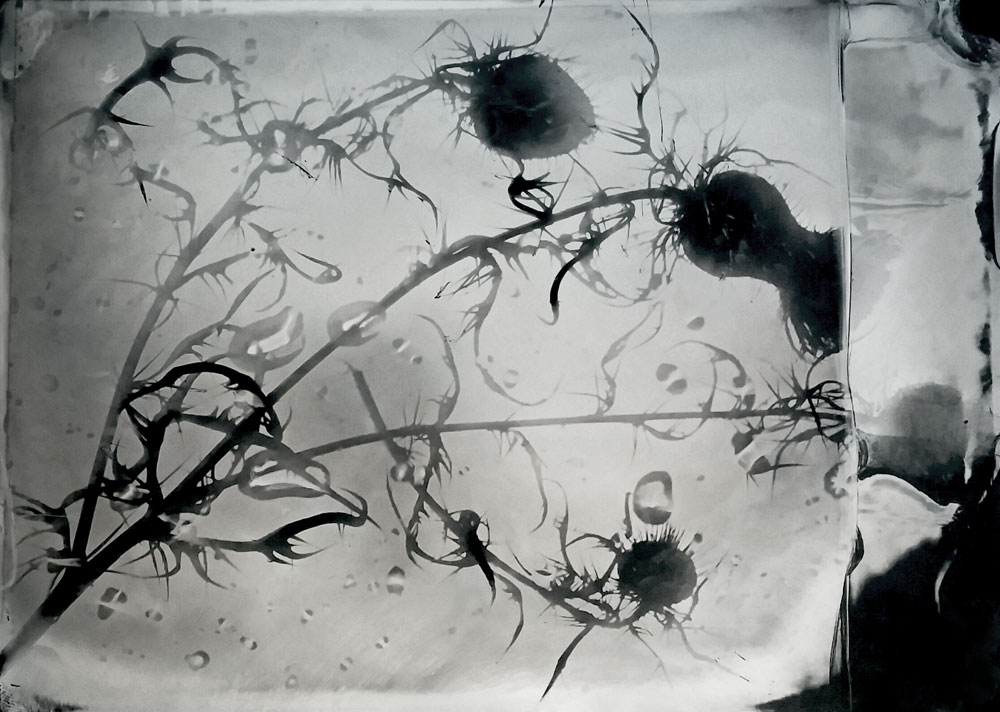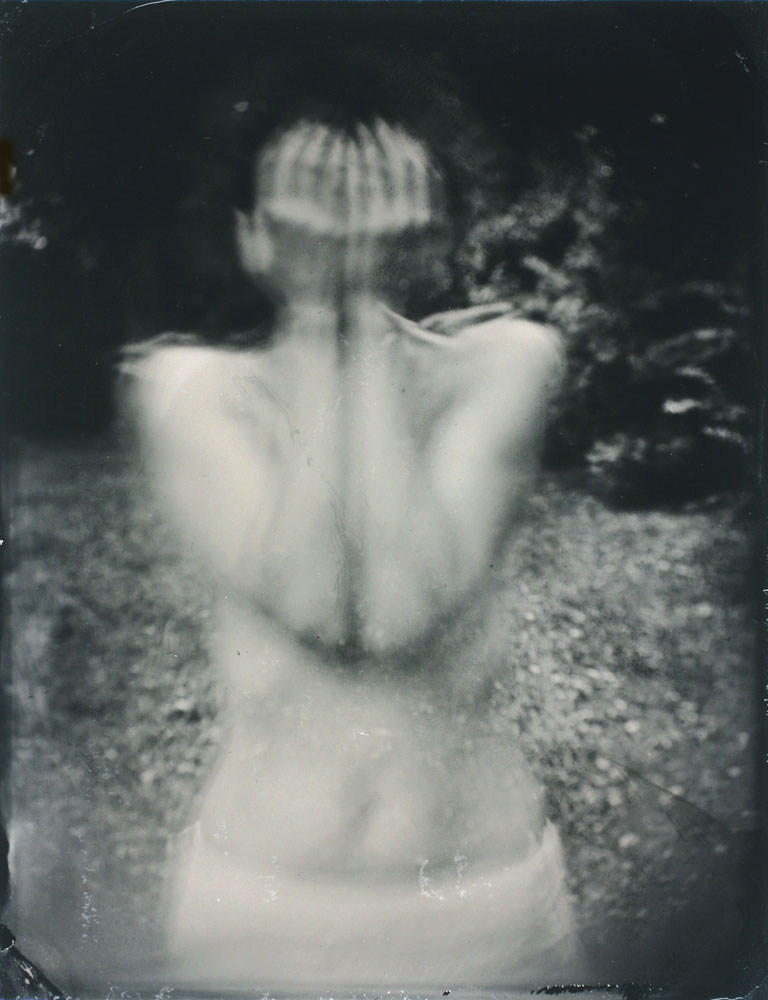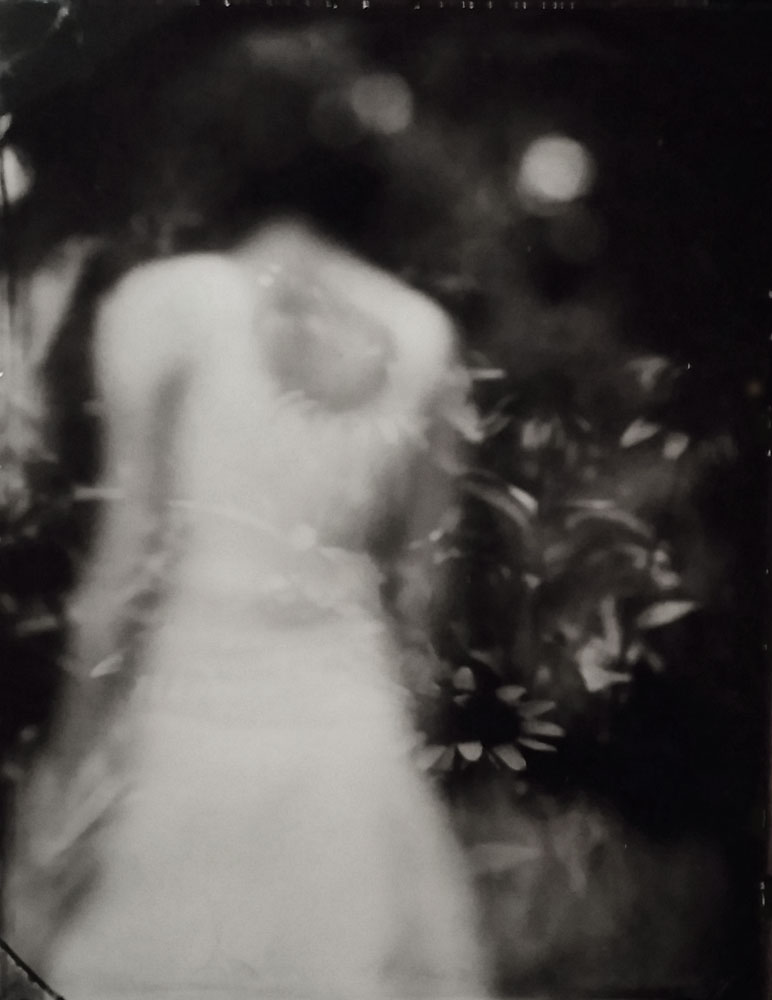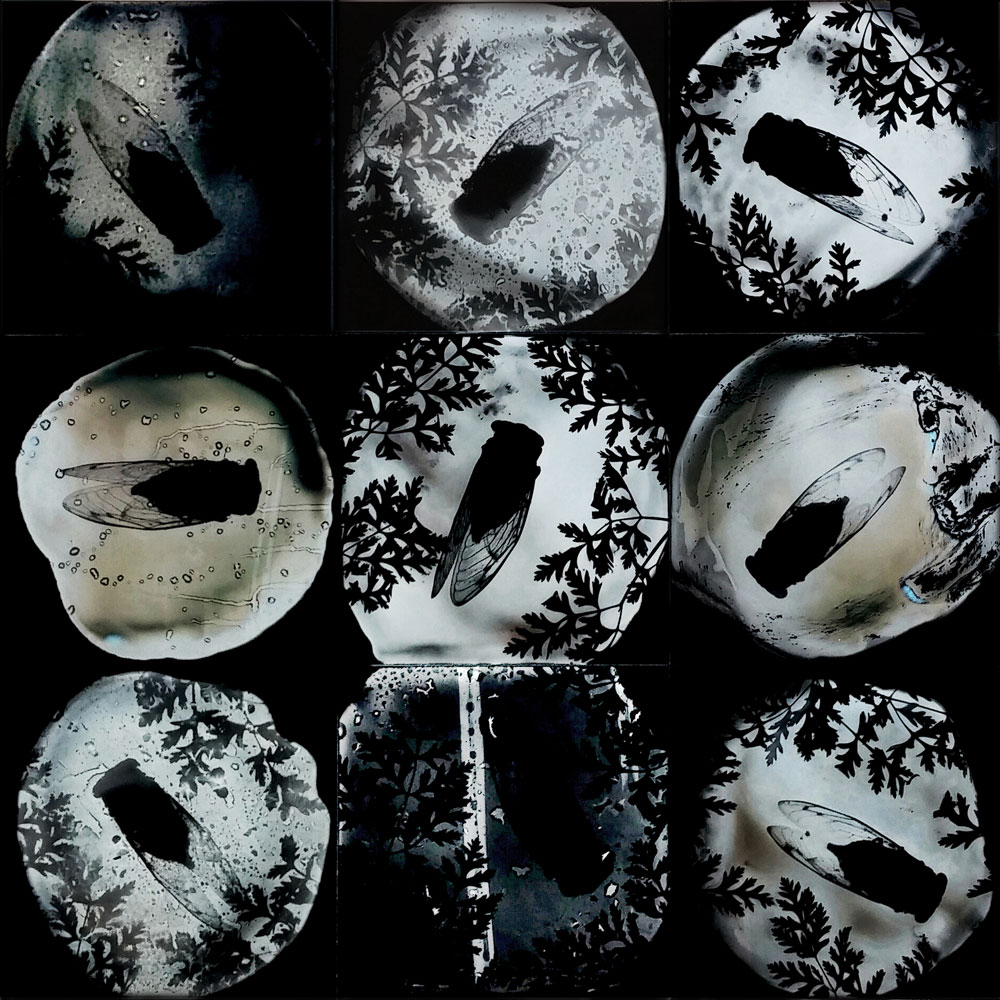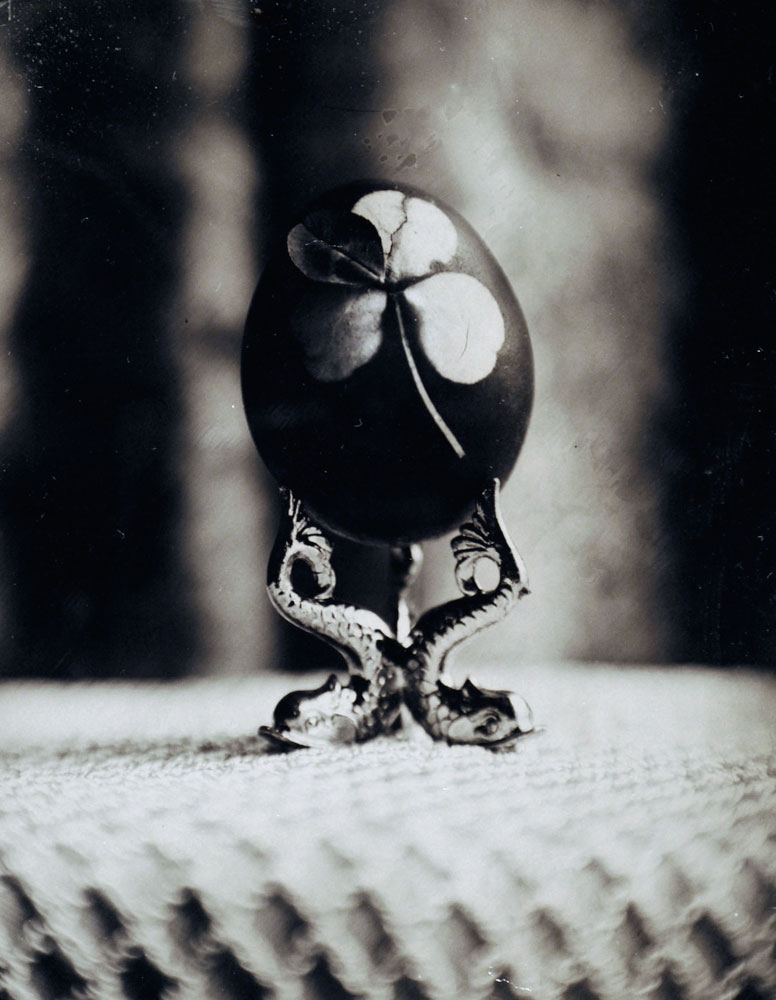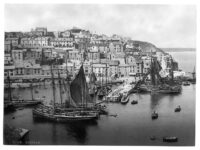My name is Nadezda Nikolova-Kratzer. I grew up between former Yugoslavia and Bulgaria (Austria too). Now I live and work in Lexington, Kentucky.
In making art, I seek to deepen the mystery — to open the door to the unknown, ethereal, and distant, while capturing a sense of beauty. I often choose to work in wet plate collodion. The fluidity of the medium allows me to experiment, push boundaries and make the process my own. I use the distinct syntax of wet plate collodion to paint inner landscapes and conjure up moods and metaphors.
In my photogram work, I employ the duality of shadow and light, simplicity and intricacy, to explore themes of transience, death, life cycles… These visual poems are my “creative response to loss;” a search for beauty, even in the expired, fragmented, and broken; a manifestation of the unconscious.
How and when did you become interested in photography?
As long as I remember, painting provided a means for creative expression. This changed when I discovered wet plate collodion. The experience of pouring, exposing and processing my first plate, using historical lenses and large-format cameras… the hands-on and visceral nature of the medium enthralled me and I felt a deep calling to pursue photography. Thankfully, events in my personal life converged in a way that freed up time to learn the process. I owe Wendell Decker, a self-taught wet plate photographer, a great deal for letting me play and helping me acquire equipment and supplies to continue on my own. The powerful work of S Gayle Stevens and Jayne Hinds Bidaut opened my eyes to the possibilities of using collodion for photogram work. (A photogram is a lens-less image made by placing an object on photosensitive substrate and exposing it to light. After processing, a photographic tracing of the object is revealed.)
Is there any artist/photographer who inspired your art?
My husband, Kaden Kratzer, a phenomenal photographer with a keen eye and extensive knowledge of obscure antiquarian processes, has been a continuous source of inspiration and support. My inclination is always to experiment and take risks, so I am drawn to the expressive and abstract work of Anselm Kiefer, Sigmar Polke and other artists who push boundaries and mix processes and materials. I also admire the masterful collodion work of Mark Osterman and France Scully Osterman and of course the works of early photography giants: Etienne Jules Marey, Gertrude Kasebier, and Julia Margaret Cameron, to name a few. I am inspired by Laurent Millet, Sarah Moon, Binh Danh, Ann Hamilton… the list goes on and on. I am also fortunate to have been exposed to the pioneering work of Ralf Eugene Meatyard, James Baker Hall, Van Deren Coke, Robert C May, and others, by virtue of inhabiting the same grounds where the so called “Lexington Camera Club” made history.
What fascinates you in wet plate collodion photography?
Visually, wet plate collodion has a distinct aesthetic that appeals to me. When used thoughtfully (and I say this because the popularity of wet plate is growing fast and with this also the temptation to use the process indiscriminately) wet plate can produce exquisite and ethereal images with stunning detail.
I am also attracted to the tactile nature of wet plate, its physicality and alchemy. Manipulating chemicals and exposure can yield artifacts the artist can use to “paint” powerful moods and otherworldly atmospheres.
Taking risks with the chemicals and discovering new effects thrills me, especially in photogram work. A straight collodion photogram, in most instances, isn’t very exciting: you have a flat image of uniform light (exposed) and dark (unexposed) area. The challenge of coaxing effects that simulate layers, liquids and resins, buoyancy, etc. out of a high-contrast medium and using a rudimentary setup (I make direct photograms) appeals to me. These artifacts represent a personal and continuously expanding visual language.
Why do you work in black and white rather than colour?
I have a vague memory of someone drawing a comparison between black and white photography and poetry while associating color photography with prose. Although color photography can be used to create powerful and poetic imagery, I think that there is something to this analogy. Removing color reveals the subtleties of shadow and light and distances the arrested form — moving it away from the particular toward the archetypal/universal and communicating something about its essence. Black and white photographs (or images produced in any monochrome printing process) automatically engage, inviting the viewer to fill in the missing information with their inner, subjective selves. That said wet plate collodion photograms have a potential for a limited color palette through chemical and exposure manipulation, which I occasionally employ in my work.
How much preparation do you put into taking a photograph/series of photographs?
Every step of the wet plate collodion process involves the artist — from mixing the chemicals, to coating the pate (aluminum, glass, or any hard surface) with salted collodion, to sensitizing the emulsion, to making the exposure, to processing the image, and finally, to covering the plate with a protective varnish. Many of the chemicals need to be prepared well ahead of time (salted collodion, varnish) and maintained (silver bath). If making ambrotypes, glass needs to be cut and cleaned… When you start working in the process, a lot of thought and energy goes into the technical aspects — getting familiar with the chemicals (some of which are hazardous), worrying whether they would perform and learning how to troubleshoot, inevitably forgetting something if working outside of the studio… But once this part becomes second nature and you develop a system, things go pretty smoothly (most of the time, at least, as chemicals can misbehave even in the most skilled hands).
In the case of photograms, I start by collecting materials (plants, twigs, feathers, insects…). I press the succulents and store the rest in my increasingly unwieldy collection. When I stumble on something that incites me, it triggers an avalanche of ideas. However, the final arrangement for the image usually comes together last minute, while the sensitized plate awaits exposure. There is a thrill in working fast and intuitively. Collodion has deliberate and meditative aspects, as well as the possibility for working intuitively and fast. And for me, this is a happy balance.
What future plans do you have? What projects would you like to accomplish?
Last summer, I focused on making cyanotypes from wet plate positives and negatives and also got my feet wet with gum printing. Recently, I had the privilege of taking a workshop with Mark Osterman at the George Eastman House to study an obscure and mesmerizing process called the American Ivorytype, which combines photography and painting. My hope is that I will continue to delve deeper into historical processes and create work that combines them. I am especially looking forward to joint projects with my husband, Kaden Kratzer, with whom I share a common vision and passion for alternative photography. In addition, I feel that as a photographer in today’s visual age, I have a responsibility to witness social and environmental injustice and create work that raises awareness and aims to inspire social change. Several projects that combine photography with my backgrounds in environmental sciences and public policy have been brewing in my mind for some time now… we’ll see what comes of them.
Website: www.nadezdanikolova.com

